Hello there, welcome to another issue of Morning Coffee, my weekly roundup of interesting writing.
Issue #26: Human drivers, sketchy CEO’s, gun violence, and pictures in a world of words
This issue contains several pieces that are more serious in tone than usual. Some of them are difficult to read, but they are worth the effort.
Let’s get to it.
♤
Can the MacBook Pro replace your iPad? | Fraser Speirs →
In case you missed it, earlier in the week Fraser Speirs wrote this gem of a piece:
Firstly, consider the hardware. The huge issue with the MacBook Pro is its form factor. The fact that the keyboard and screen are limited to being held in an L-shaped configuration seriously limits its flexibility. It is basically impossible to use a MacBook pro while standing up and downright dangerous to use when walking around. Your computing is limited to times when you are able to find somewhere to sit down.
♧
Review: Project Fi by Google | Paul Stamatiou →
Paul Stamatiou has a nice writeup on Google’s first foray into the phone service business. Definitely an interesting option for those who can opt into it.
♡
The high-stakes race to rid the world of human drivers | Adrienne Lafrance →
Fascinating piece over at The Atlantic:
As these technology giants zero in on the car industry, global automakers are being forced to dramatically rethink what it means to build a vehicle for the first time in a century. Aspects of this race evoke several pivotal moments in technological history: the construction of railroads, the dawn of electric light, the birth of the automobile, the beginning of aviation. There’s no precedent for what engineers are trying to build now, and no single blueprint for how to build it.
I don’t know which company will win the race, but I think we can all agree that the car industry is in sore need of disruption.
♢
The CEO paying everyone $70,000 salaries has something to hide | Karen Weise →
Remember Gravity’s CEO, Dan Price? He’s the guy that raised his company’s minimum salary to $70,000 a year after reading a study claiming that, once you earn that, more money doesn’t make you happier. What was even more impressive about this whole story is that Price actually lowered his own salary to $70,000 too, down from a cool million dollars a year. Obviously, the story got tons of publicity and Price’s popularity skyrocketed as a result.
As it turns out, it looks like there’s more to Price’s story than we knew at the time. Karen Weise dug deeper into his story and poke some holes in his narrative:
The lawsuit is light on details, but it claims that Price “improperly used his majority control of the company” to overpay himself, in the process reducing what [Dan’s brother] Lucas was due. “Daniel’s actions have been burdensome, harsh and wrongful, and have shown a lack of fair dealing toward Lucas,” the suit alleges. It asks for unspecified damages and that Price buy out Lucas’s interest in Gravity. Hollon said the lawsuit was the culmination of “years” of efforts to resolve Lucas’s concerns. Price “on several occasions suggested to Lucas that if Lucas didn’t like Dan’s actions regarding Lucas’s rights as a shareholder, Lucas should seek legal remedies,” Hollon wrote in an e-mail. “Prior to the lawsuit, Dan had made clear that he would only engage with Lucas through Lucas’s counsel.”
If the lawsuit wasn’t a reaction to the wage hike, could it have been the other way around? After all, Price announced his magnanimous act a month after his brother sued him for, in essence, being greedy. Lowering his pay could give Price negotiating leverage, too. “With profits, at least in the short term, shifted to salaries, there is little left over to buy out his brother,” the New York Times reported Price said.
It appears things are about to get ugly.
♤
When gun violence meets ideology | Evan Osnos →
Evan Osnos writes a terrific piece for The New Yorker on the recent mass shooting in San Bernardino:
San Bernardino is No. 13—the thirteenth mass public shooting in the United States in the past week. Most of the others—in Boston, Houston, Sacramento—haven’t received much national news attention, because Americans are still absorbing the horror of what happened last week, when, on the day after Thanksgiving, a man named Robert Lewis Dear, Jr., was arrested after going on a rampage at a Planned Parenthood clinic in Colorado Springs, killing three people and injuring nine others. It’s too soon to know what led to the killings in San Bernardino, but it’s a strange fiction to pretend, as we often do, that we have yet to understand what led us to this broader moment. Some of the reasons are in plain sight, and have been for decades.
13 mass public shootings in a week. This piece is a must read.
♧
End the gun epidemic in America | The New York Times Editorial Board →
Today, the New York Times Editorial Board published their first front-page editorial since 1920:
It is a moral outrage and a national disgrace that civilians can legally purchase weapons designed specifically to kill people with brutal speed and efficiency. These are weapons of war, barely modified and deliberately marketed as tools of macho vigilantism and even insurrection. America’s elected leaders offer prayers for gun victims and then, callously and without fear of consequence, reject the most basic restrictions on weapons of mass killing, as they did on Thursday. They distract us with arguments about the word terrorism. Let’s be clear: These spree killings are all, in their own ways, acts of terrorism.
♡
Maleficent, and what makes a villain | Drew Coffman →
Great piece by Drew Coffman:
What breaks someone the most is the giving in to darkness, and the refusal to take responsibility for one’s actions — and for many, there is never any coming back from it. And so it goes that in this film one character is fully redeemed while another destroys their life, totally and completely. For nothing.
This remarkably acute observation can teach us a great deal about life, but it works very well as a narrative tool in films, too. Often times, the most interesting villains are those who, no matter how evil, still possess at least one redeemable trait. Pure evil for evil’s sake is, simply put, not very interesting.
♢
Chapeau! – The Peak Design Everyday Messenger review | Mathieu Gasquet →
A couple days ago, Mathieu of MirrorLessons reviewed what is possibly the most eagerly anticipated camera bag of all time. This is a very comprehensive review, and it touches on everything there is to know about the bag. If the Everyday Messenger is on your radar, you’re going to want to read this.
♤
In a world of words, pictures still matter | Stuart Franklin →
Fantastic essay over at The Guardian:
James Nachtwey, another veteran of reporting on Bosnia, was packing recently for a trip to document the refugee crisis on Lesbos and in Croatia. “What allows me to overcome the emotional obstacles inherent in my work,” he told me, “is the belief that when people are confronted with images that evoke compassion, they will continue to respond, no matter how exhausted, angry or frustrated they may be.” David Cameron’s overnight change of policy on Britain accepting Syrian refugees was driven, as we now know, by photography.
Great piece. Also, don’t miss this selection of pictures that have helped to change history. Be warned, though, most of these brutal images are not for the faint of heart.
♧
Street Photography London interviews Rinzi Ruiz →
Great interview with one of my favorite street photographers, with some awesome accompanying pictures.
♡
Afterword
If you follow me on Twitter, you may already know that I finally received my leather Brixton camera bag from Ona a couple days ago. I fully intend to write a complete review of the bag but before that, I’d like to share a few first impressions with you.
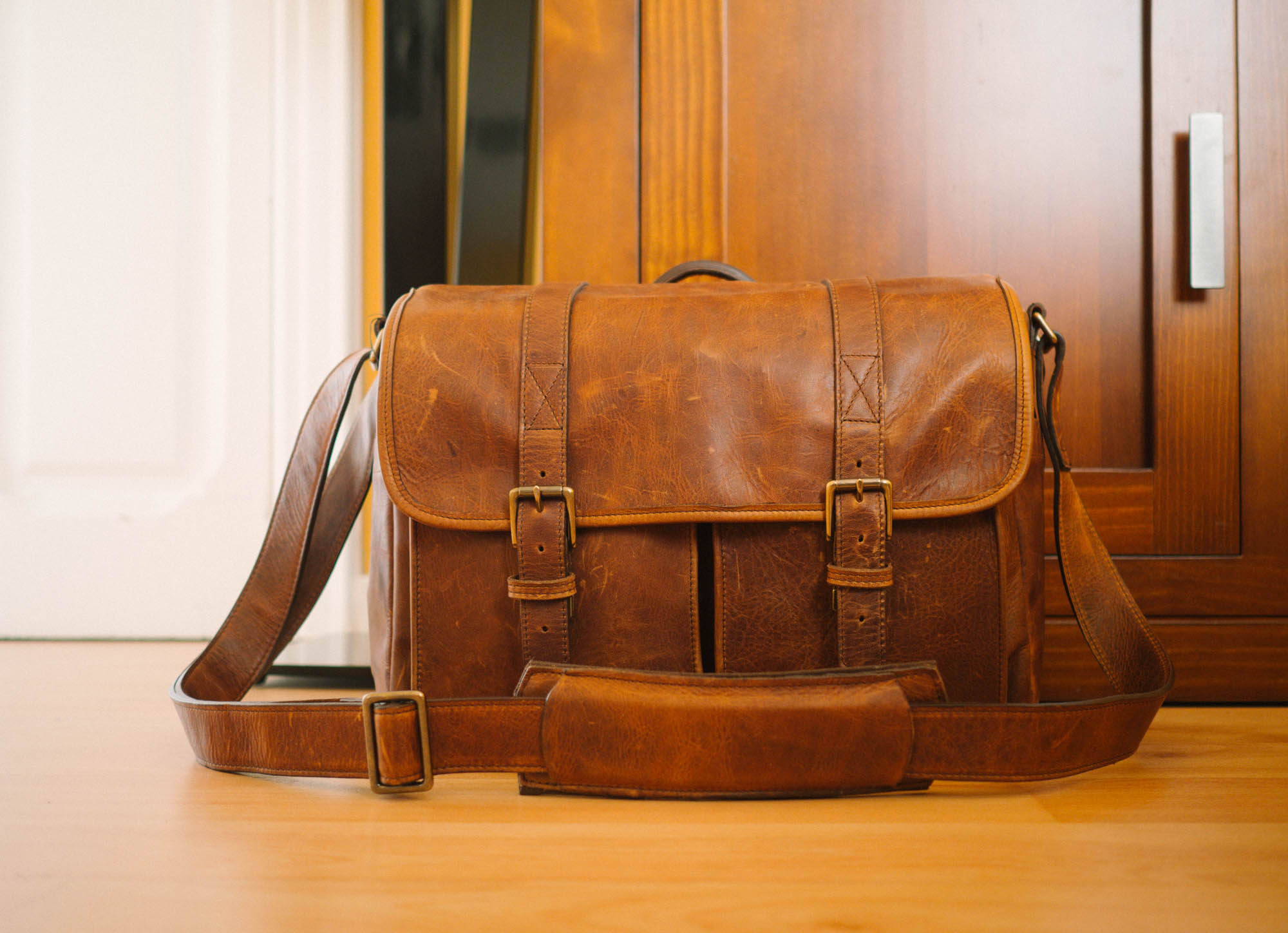
I’ll just come out and say it: the leather Brixton is one of the most beautiful bags I’ve ever seen. Not camera bags, mind you, but bags, period. It’s definitely the most beautiful bag I’ve ever owned, or used.
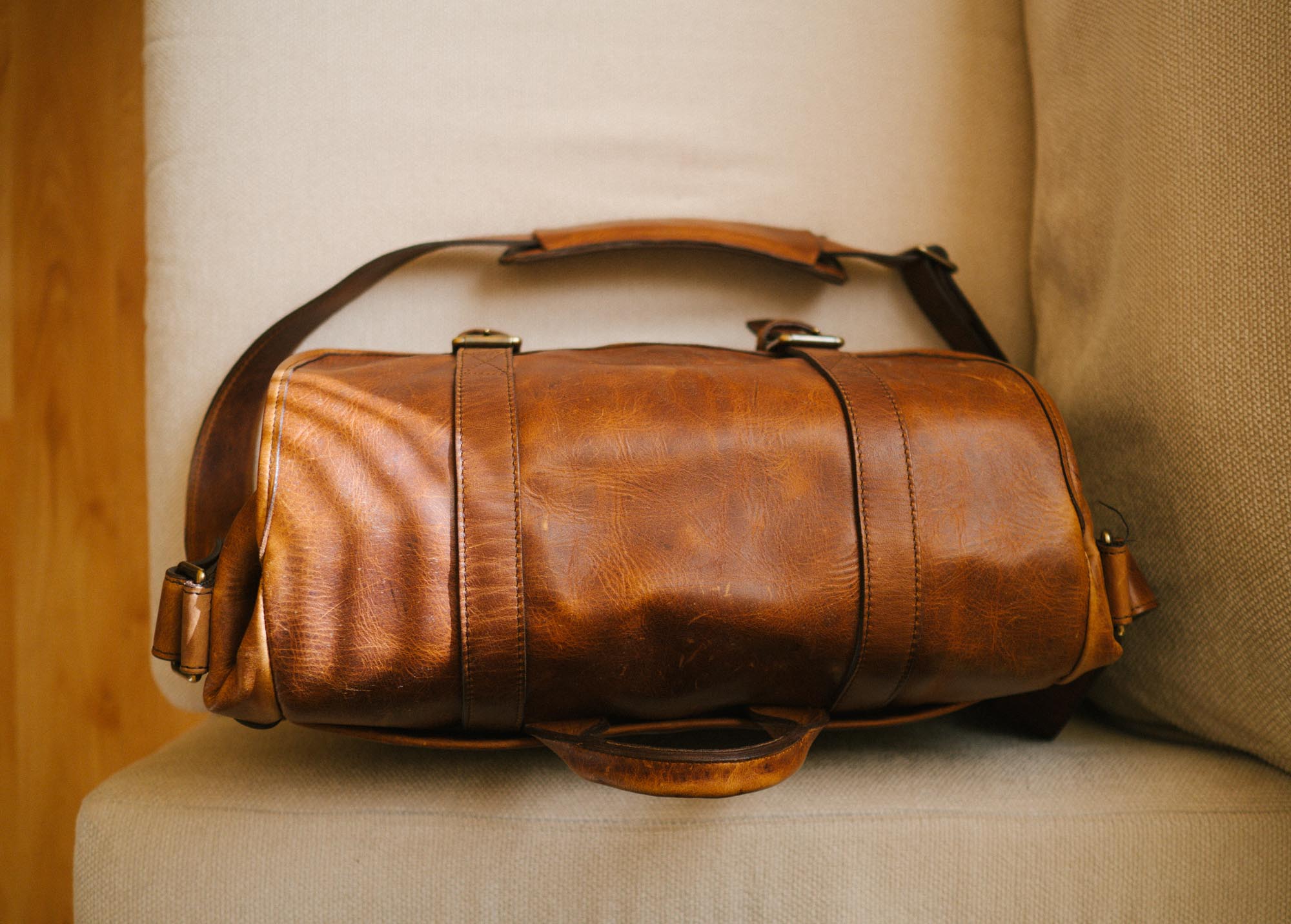
It is gorgeous. The Antique Cognac finish is beautifully aged, but make no mistake, this is still clearly a new bag, and the leather is a bit stiff at first. After 48 hours of intensive use — basically two full days out with it — I’m already starting to notice some slight softening, though, which makes me confident that the bag is going to feel awesome once it gets fully broken in.
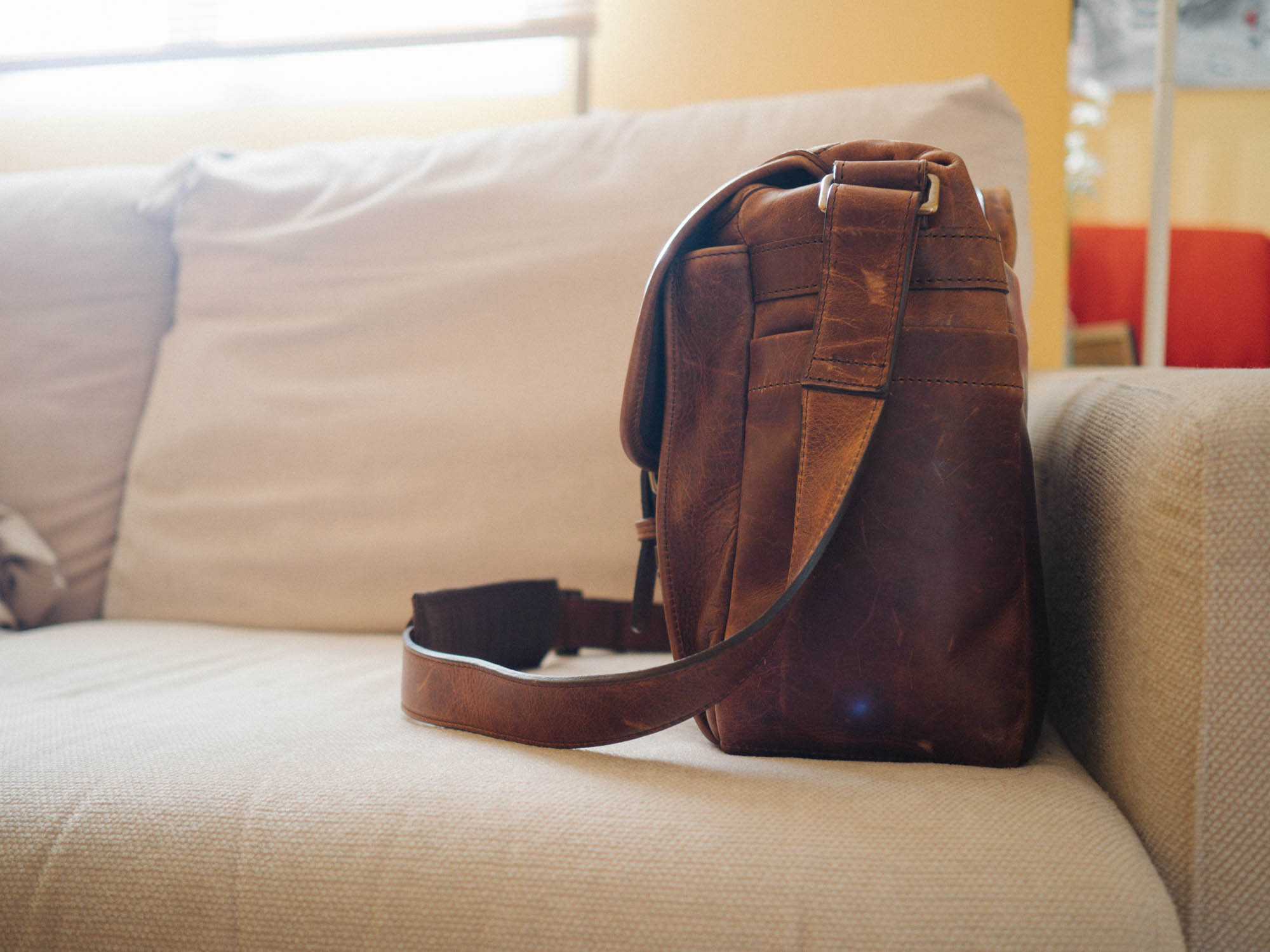
As far as capacity goes, the bag can easily hold everything I need to carry on a daily basis, and even my full kit on special days.
For example, I can carry my Sony α7 II with the 24-70mm f/4 zoom lens attached, plus the 55mm f/1.8 and 70-200mm f/4 lenses, my Sony HVL-F43M flash, and my 13-inch MacBook Pro.
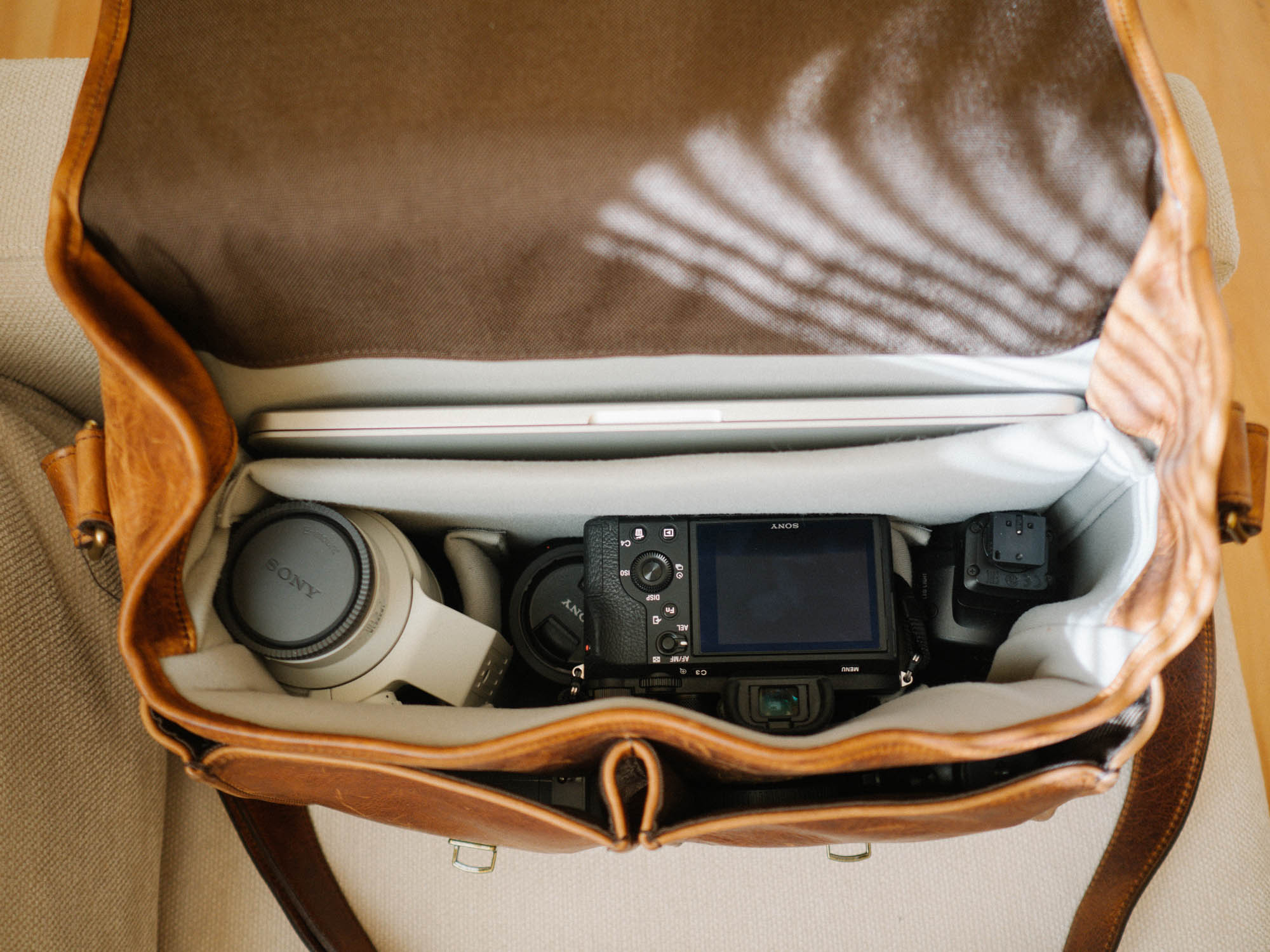
All of this fits in the main compartment, and there’s plenty of room in the front pockets for my cleaning tools, my small Manfrotto tripod and the MBP’s charger. I usually carry a spare iPhone charger and Lightning cable in one of the side pockets, and there’s still room in the back pocket for a magazine, a small paperback book, or a full-sized iPad. Even an iPad Pro.
Clearly, space isn’t a problem with this bag, at least when considering my current photographic needs.

Then there’s the matter of weight. At 4.1 lbs empty, this is clearly not your typical lightweight bag, and once you start adding gear, things can get quite heavy. That was my single biggest concern before buying the leather version of the bag, I’ll admit. You can really feel the difference on your back between a heavy bag and a lighter bag after a long day.
That extra weight — a full pound heavier than the canvas versions — essentially means you could carry one more lens or another camera body for the same total weight. All of these are valid, logical concerns.
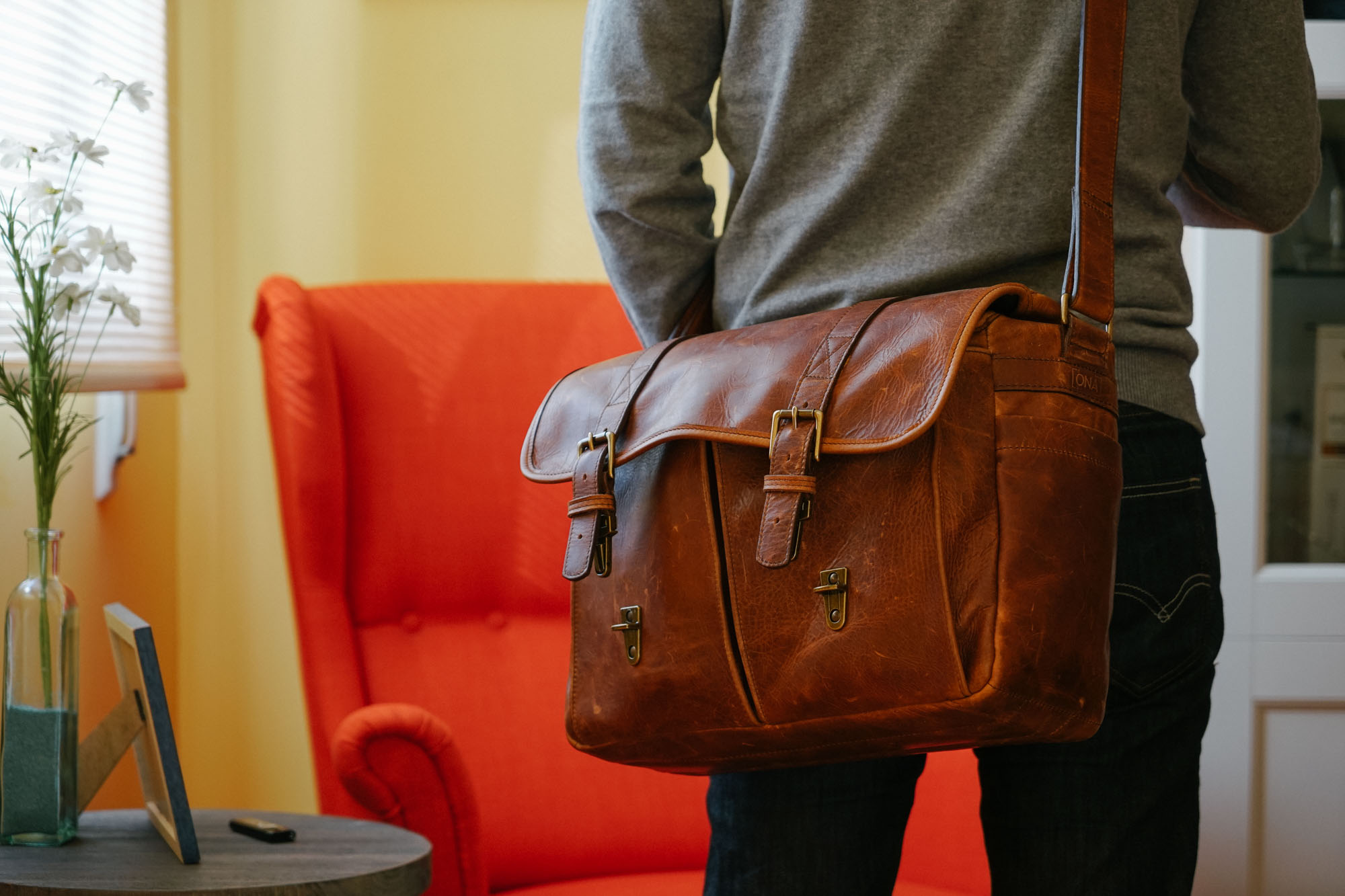
After just one look at that leather, though, I knew I was doomed to throw logic and caution into the wind, and just buy the leather bag anyway. It took me a few months to finally take the plunge, but I’m really, really glad I did. This is a bag that will probably get passed down to my future children in a few decades’ time.
Still, it is a heavy bag, there’s no getting around that. Particularly if you need to carry a laptop with you — unless said laptop is a super light notebook like the new MacBook, that is.
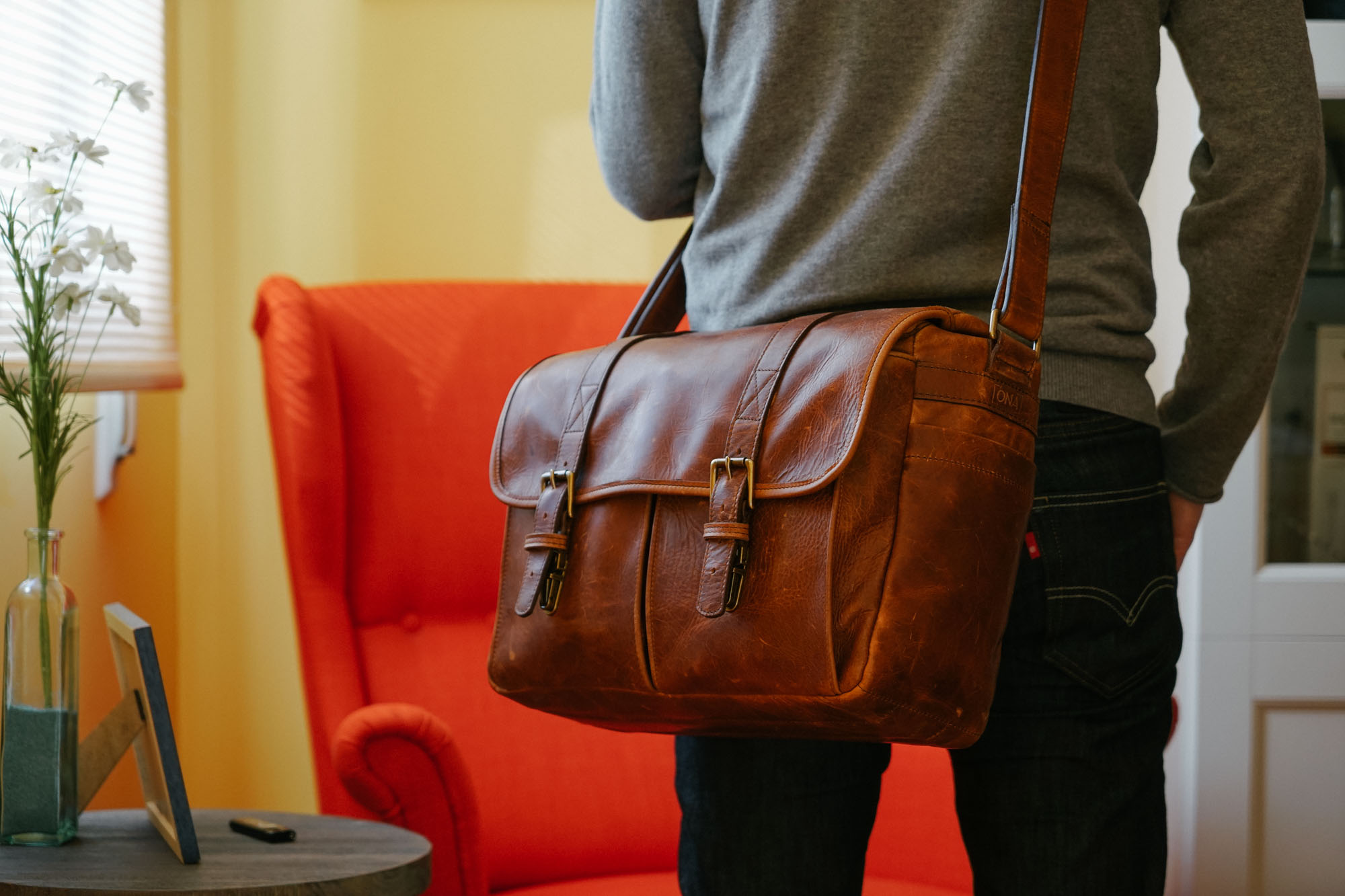
The good news is, even when fully loaded, the leather Brixton is comfortable enough to carry without any issues. The bad news is that any bag this heavy, no matter how comfortable, is going to be tough on your back after a few hours of continued use. The leather Brixton can be many things, but one thing it’s not is a casual walk-around bag.
So far I’ve coped well with this, though. By taking short breaks every now and then and allowing my back to rest, I can easily make it through an entire day without ever feeling sore.
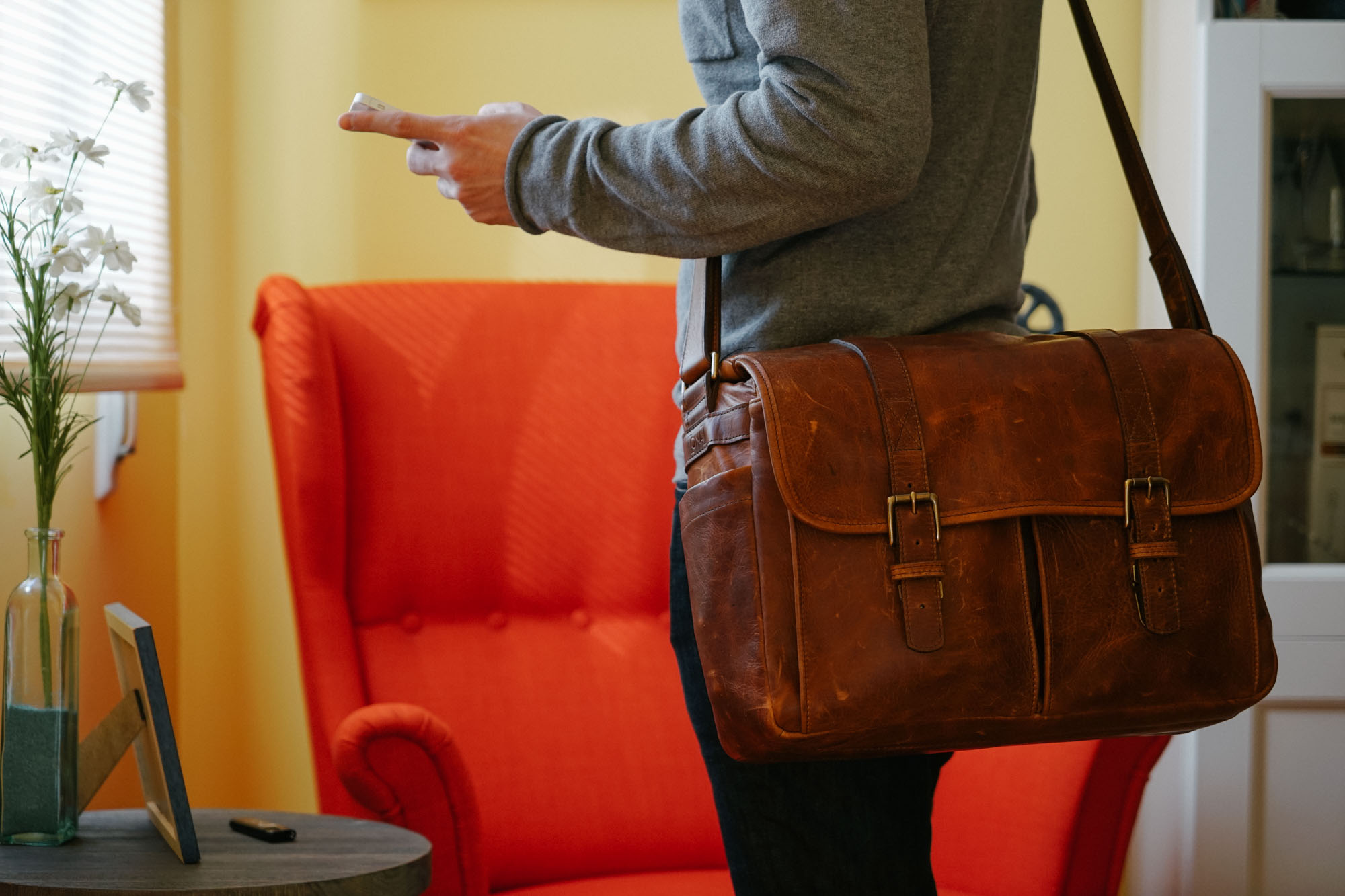
It’s also worth pointing out that if you only carry moderate amounts of gear — say, for instance, you don’t need a laptop, or you only need a couple lenses — then weight becomes a non-issue. With light to moderate loads, the Brixton is almost perfect.
Now let’s talk about the build quality.
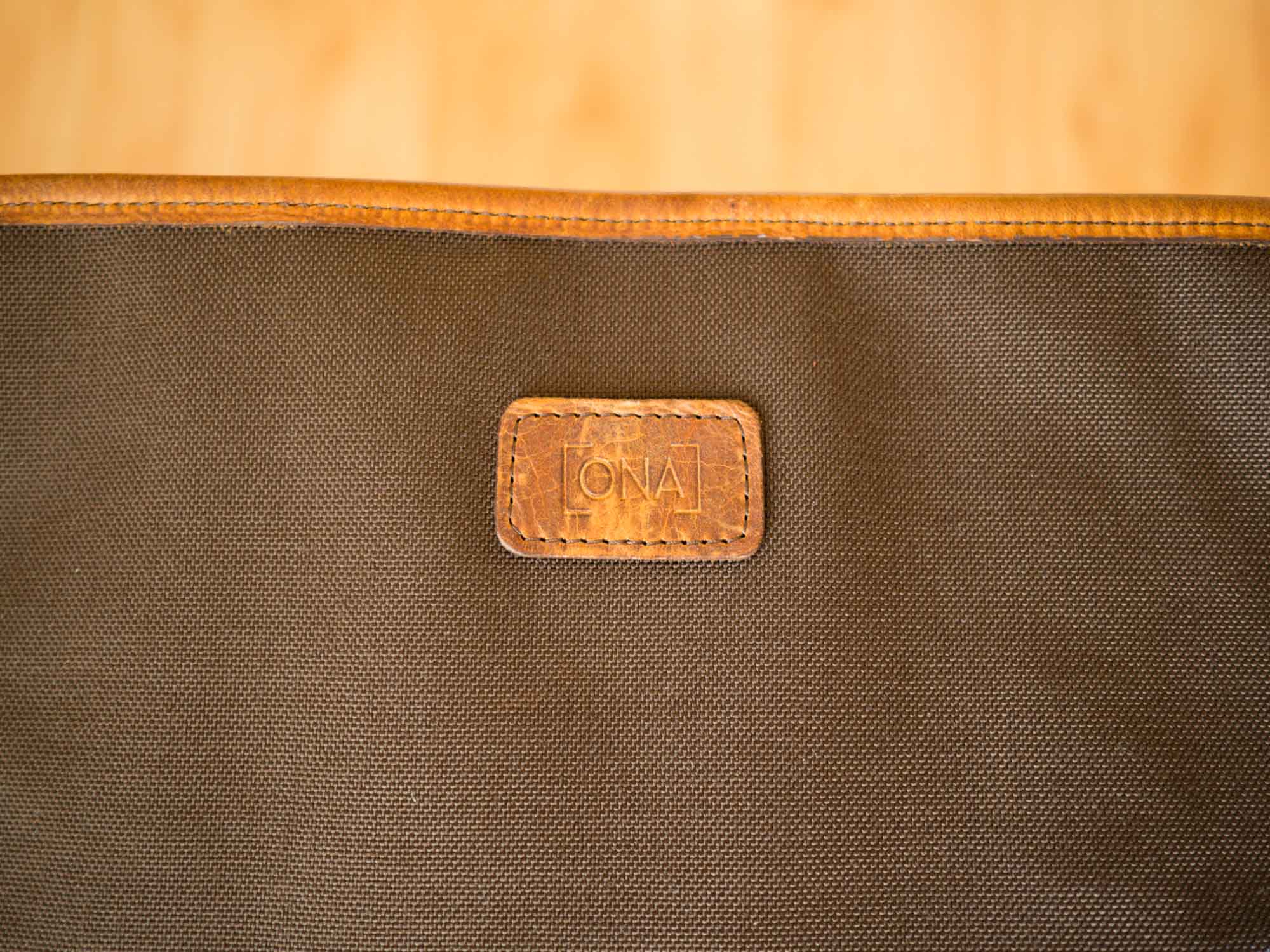
The leather Brixton is built to last for generations, and this is no understatement. Everything from the thick leather to the solid construction is of the highest quality. Clearly the Brixton is an expensive bag, but it definitely makes you feel the incredible craftsmanship that went into creating it.
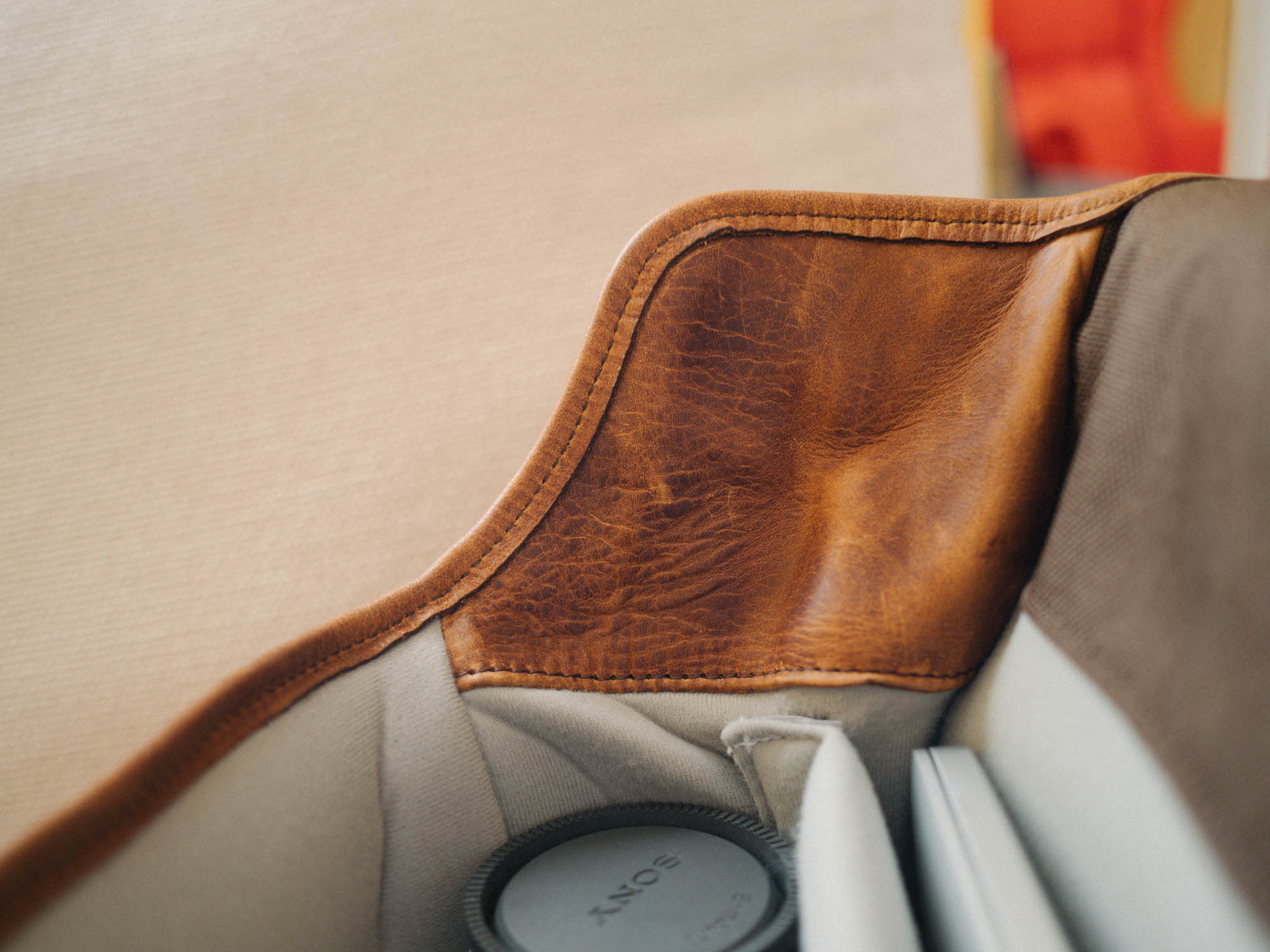
In the high-end leather bag market, the only company I can think of that produces similarly high-quality bags is Hard Graft.1 Compare the leather Brixton with their Box Camera Bag, which is more expensive than the Ona while offering not nearly as many features — or, in my personal opinion, looking nearly as good — and it’s no wonder why Ona has been absolutely killing it lately. These are not just cool-looking, overpriced bags, they are exquisitely designed, impeccably made, full-featured bags, and it shows.
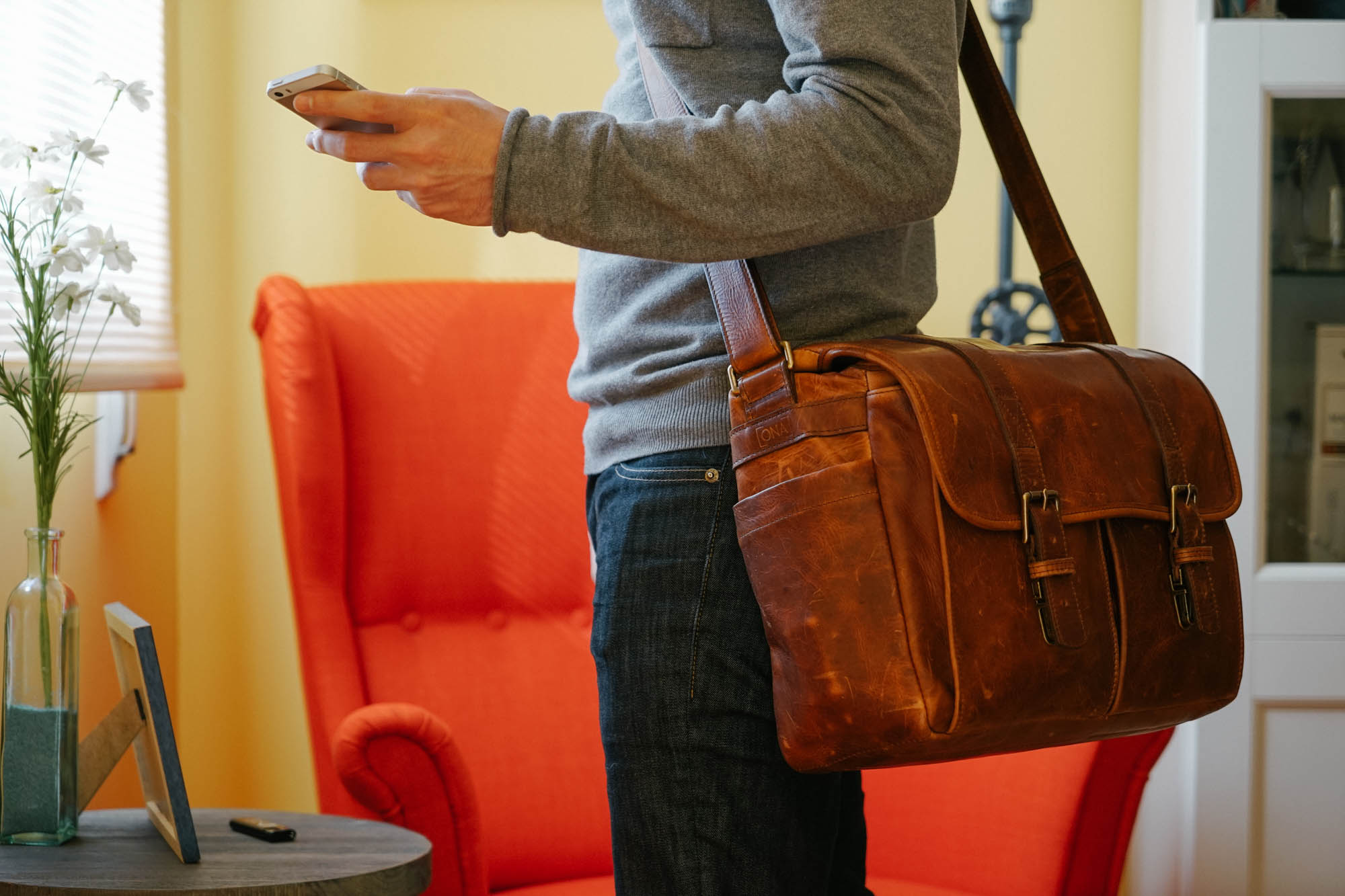
It’s still soon to be drawing any conclusions, so for now let’s just say I’m extremely satisfied with my purchase. I’m also looking forward to seeing how the bag matures with time and use. This is one of those rare items that get better with age, as the leather develops a rich patina that only adds character to the bag.
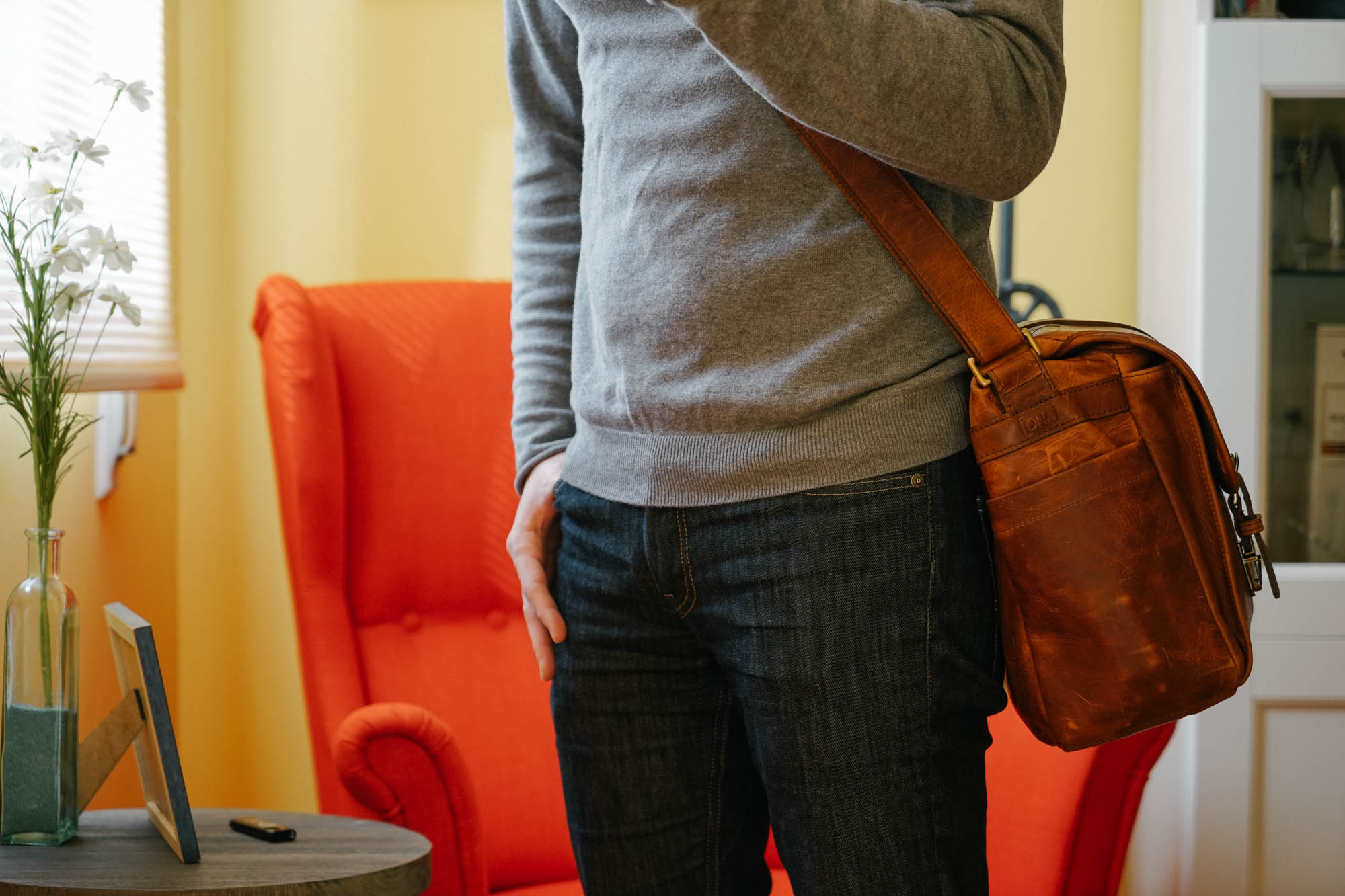
♢
On the writing front, the next long-form piece I’m working on is my review of the Sony Zeiss 24-70mm F4 Vario-Tessar T* FE OSS lens.
This piece of glass has a poor reputation among pixel-peepers, but in my experience it performs very well in real-world usage. It may not be as sharp in the corners as some other lenses when shooting charts in a studio and zooming in at 100%, but it’s good enough for nearly all practical purposes.
As usual, I’ll have much more to say about it in the full review. In the meantime, stay tuned here and on Twitter for more thoughts on the Brixton bag, as well as the lens, as I continue to work on the piece.
♤
And on that note, I’m afraid we’ve reached the end of this issue. There were some really great articles in the roundup this time around, and I do hope you enjoyed them.
As always, have a great weekend, and thank you for reading.
-
I know Saddleback Leather makes awesome quality bags, but I just don’t really like the aesthetics of their products. Of course, your mileage may vary.↩
